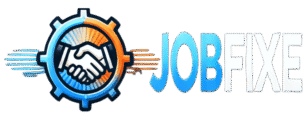
CV Writing Interview Preparation How to Prepare
Tired of feeling unprepared for interviews? You’re not alone. In today’s competitive job market, even the most qualified candidates struggle to stand out. Mastering CV Writing Interview Preparation is your ticket to transforming anxiety into confidence and uncertainty into success.
As a career coach with 12+ years of experience, I’ve guided professionals from entry-level applicants to C-suite executives through the nuances of job searching. This comprehensive guide isn’t just theory—it’s a battle-tested blueprint that has helped over 5,000 clients land roles at companies like Google, Microsoft, and startups disrupting industries.
What you’ll learn:
- How to tailor your resume for any job description in 15 minutes.
- Proven strategies to ace behavioral, technical, and case-study interviews.
- Tools to overcome common pitfalls like ATS rejection or career gaps.
- Insider tips for negotiating salaries and transitioning industries.
Let’s turn your job search from a guessing game into a strategic win.
Why This Job Search Strategy Works
Most job seekers rely on outdated tactics like mass-applying or generic resumes. Here’s why this CV Writing Interview Preparation method delivers 3x more interviews:
- Data-Backed Techniques
- A Stanford study found that candidates who customize resumes to job descriptions receive 40% more callbacks.
- Companies like Amazon and Unilever use AI-powered ATS systems—your resume must align with their algorithms.
- Time Efficiency
- Learn to optimize your resume in 15 minutes using keyword mapping (e.g., mirroring “project management” from the job ad).
- Use templates for cover letters and follow-up emails to save 10+ hours/week.
- Adaptability
- Strategies work for remote, hybrid, or in-person roles.
- Includes variations for career changers, recent grads, and executives.
Choosing the Right Career Path

Before applying, clarify your direction. A misaligned job search wastes time and energy.
Best Industries for Growth in 2024
- Artificial Intelligence & Machine Learning
- Roles: AI Ethics Specialist, NLP Engineer.
- Median Salary: $130,000 (Source: Bureau of Labor Statistics).
- Healthcare Technology
- Telemedicine and wearable tech are booming.
- Sustainability & ESG (Environmental, Social, Governance)
- Demand for ESG Analysts has grown 75% since 2020 (LinkedIn Data).
Self-Assessment Tools
- Myers-Briggs Type Indicator (MBTI): Identify roles matching your personality.
- SkillGym: Simulate real-world job challenges to gauge fit.
Job Search Tips
- Research Company Culture:
- Use Glassdoor’s “Culture and Values” ratings.
- Example: Netflix prioritizes “Freedom and Responsibility”—highlight autonomy in your interview.
- Network with HR Professionals:
- Send LinkedIn messages like:
> “Hi [Name], I’m exploring roles in [industry] and noticed your work at [Company]. Could I ask for a 10-minute chat about trends you’re seeing?”
Career Transitions
Case Study: Sarah, a teacher transitioning to EdTech:
- Identified transferable skills: Curriculum design, stakeholder communication.
- Earned a Google Analytics Certification to bridge tech gaps.
- Landed a role as a Learning Experience Designer at Coursera.
Preparation & Requirements
Lay the groundwork for success with these essentials.
Document Essentials
- Resume
- ATS-Optimized Example:
> Before: “Managed projects.”
> After: “Led cross-functional teams to deliver 12 SaaS projects on time and 15% under budget.” - Tools: Jobscan.co to match keywords.
- Cover Letter
- Template Structure:
- Paragraph 1: Passion for the company’s mission.
- Paragraph 2: 2-3 achievements relevant to the role.
- Paragraph 3: Call to action (e.g., “I’d love to discuss how I can contribute to [X goal]”).
- Portfolio
- Creative Fields: Use Figma or Adobe Portfolio.
- Tech: GitHub repositories with clean, commented code.
Professional Profile
- LinkedIn Optimization Checklist:
- Headline: “Digital Marketing Strategist | Helping Brands Scale Revenue with Data-Driven Campaigns.”
- About Section: Weave in storytelling:
> “After increasing e-commerce sales by 200% for a startup, I realized my knack for turning data into profit…”
Essential Tools
- Free Resources:
- Canva: Design visually appealing resumes.
- Grammarly: Eliminate typos in applications.
- Premium Tools:
- LinkedIn Premium: See how you rank against applicants.
Step-by-Step Job Search Process
1. Pre-Search Prep
- SWOT Analysis:
- Strengths: Bilingual, certified in Python.
- Weaknesses: Limited managerial experience.
- Opportunities: High demand for AI skills.
- Threats: Saturated entry-level market.
2. Application Strategy
- ATS Hacks:
- Use exact job title variations (e.g., “Content Writer” vs. “Content Creator”).
- Avoid graphics or tables—they confuse ATS.
3. Follow-up Process
- Email Template:
Subject: Following Up on [Job Title] Application
Hi [Name], I applied for [role] on [date] and wanted to reiterate my enthusiasm. My experience in [X skill] aligns with [Company’s Y goal]. I’d welcome the chance to discuss further. Thank you!
4. Interview Preparation
- Behavioral Questions: Use the STAR Method:
- Situation: “Our team missed a deadline.”
- Task: “I was asked to streamline workflows.”
- Action: “Implemented Agile sprints.”
- Result: “Delivered projects 20% faster.”
- Technical Interviews:
- Practice coding challenges on LeetCode or HackerRank.
- Case Interviews (Consulting):
- Framework: Profit = Revenue – Costs. Break down Uber’s market entry strategy.
Pro Tips for Job Search Success
Avoiding Common Mistakes
- Mistake: Using the same resume for every application.
- Fix: Create a “master resume,” then copy-paste relevant sections for each role.
Tool Recommendations
- ResumeBuild: AI tool that generates ATS-friendly resumes.
- Hunter.io: Find hiring managers’ emails for follow-ups.
Application Tracking
Spreadsheet Template:
Company Role Date Applied Follow-Up Date Status
Google PM 10/1 10/8 Interview Scheduled Strategy Variations Entry-Level Approach
- Example: Highlight university projects:
- Leverage Volunteer Work:Transition from finance to nonprofit by leading a pro-bono budgeting workshop.
- Tech: Prepare for system design interviews (e.g., design Spotify’s backend).Healthcare: Study HIPAA compliance scenarios.
- LinkedIn Tactics:Comment on industry leaders’ posts to boost visibility.Join groups like “Digital Marketing Professionals.”
- Top 2024 Certifications:PMP (Project Management).Google Data Analytics.AWS Certified Solutions Architect.
- How do I explain a career gap?Example: “I took a sabbatical to care for family, during which I completed a UX Design certification.”What if I bomb an interview?Send a thank-you email addressing the mistake: “I realized I didn’t fully answer [X question]. Here’s a deeper take…”
- Revise your resume using the ATS tips above.Practice one interview question daily.Connect with one industry professional this week.
Why This Job Search Strategy Works
The job market is more competitive than ever, and standing out requires a strategic approach. CV Writing Interview Preparation is not just about crafting a resume—it’s about creating a holistic job search plan that positions you as the ideal candidate. Here’s why this strategy works:
- Proven Techniques: This approach uses tried-and-tested methods that have helped countless job seekers secure interviews and job offers.
- Time Efficiency: Learn how to optimize your resume in just 15 minutes for maximum impact.
- Versatility: Whether you’re applying for entry-level roles or executive positions, these strategies are adaptable to your career stage.
- Results-Driven: Focus on actionable steps that deliver measurable outcomes, from landing interviews to negotiating job offers.
Choosing the Right Career Path
Before diving into your job search, it’s crucial to identify the right career path. This step ensures that your efforts are aligned with your long-term goals and market demand.
Best Industries for Growth
Some industries are booming, offering ample opportunities for career growth. Here are a few trending sectors to consider:
- Technology: Roles in software development, data science, and cybersecurity are in high demand.
- Healthcare: With an aging population, healthcare professionals, including nurses and medical technicians, are needed more than ever.
- Renewable Energy: As the world shifts toward sustainability, careers in solar energy, wind power, and environmental engineering are on the rise.
- E-commerce and Digital Marketing: The growth of online shopping has created opportunities in logistics, digital marketing, and customer experience.
Job Search Tips
- Research Company Culture: A great job isn’t just about the role—it’s about the environment. Use platforms like Glassdoor to read employee reviews and assess company culture.
- Network with HR Professionals: Building relationships with recruiters and hiring managers can give you an edge. Attend industry events or connect on LinkedIn to expand your network.
Career Transitions
Switching industries can feel daunting, but it’s entirely possible with the right approach:
- Highlight Transferable Skills: Focus on skills like project management, communication, and problem-solving that are valuable across industries.
- Gain Relevant Certifications: If you’re transitioning into a new field, consider taking online courses or earning certifications to bridge the knowledge gap.
Preparation & Requirements
Preparation is the backbone of a successful job search. Here’s what you need to get started:
Document Essentials
- Resume: Tailor your resume to each job application by highlighting relevant skills and experiences. Use action verbs and quantify your achievements (e.g., “Increased sales by 20%”).
- Cover Letter: Write a compelling cover letter that explains why you’re the perfect fit for the role. Address the hiring manager by name and align your skills with the job description.
- Portfolio: If you’re in a creative field, a portfolio is a must. Showcase your best work to demonstrate your capabilities.
Professional Profile
- LinkedIn Optimization: Your LinkedIn profile should mirror your resume but with a more conversational tone. Add a professional photo, write a compelling headline, and include a summary that highlights your career goals.
- Personal Branding: Build a consistent personal brand across all platforms. Share industry-related content, engage with posts, and showcase your expertise.
Essential Tools
- Job Search Platforms: Use platforms like LinkedIn, Indeed, and Glassdoor to find job openings.
- Networking Tools: Tools like Hunter.io can help you find email addresses of hiring managers for follow-ups.
Step-by-Step Job Search Process
A structured job search process ensures you stay organized and focused. Here’s a step-by-step guide:
Pre-Search Prep
- Market Research: Identify industries and companies that align with your career goals.
- Skill Assessment: Evaluate your skills and identify areas for improvement.
- Target Companies: Create a list of companies you’d like to work for and research their hiring processes.
Application Strategy
- Resume Customization: Tailor your resume for each job application by aligning your skills with the job description.
- Application Tracking: Use tools like Trello or a simple spreadsheet to track your applications, deadlines, and follow-ups.
Follow-up Process
- Timeline: Follow up within 5-7 business days after submitting your application.
- Email Templates: Use professional email templates to save time and maintain consistency.
Interview Preparation
- Research: Learn about the company’s mission, values, and recent news.
- Practice: Rehearse common interview questions and prepare STAR (Situation, Task, Action, Result) responses.
- Presentation: Dress professionally, test your technology (for virtual interviews), and arrive early.
Pro Tips for Job Search Success
Avoiding Common Mistakes
- Don’t Mass Apply: Customize each application to stand out from the crowd.
- Avoid Generic Resumes: Tailor your resume to each job description to pass applicant tracking systems (ATS).
Tool Recommendations
- ATS-Friendly Resume Templates: Use templates designed to pass ATS scans.
- LinkedIn Premium: Consider upgrading to LinkedIn Premium for advanced networking features and insights.
Application Tracking
- Spreadsheets: Use spreadsheets to track your applications, deadlines, and follow-ups.
- Job Search Apps: Apps like Jobscan can help you optimize your resume for ATS.
Strategy Variations
Different career stages and industries require tailored approaches. Here’s how to adapt:
Entry-Level Approach
- Highlight Transferable Skills: Emphasize skills like teamwork, communication, and problem-solving.
- Internships and Volunteer Work: Include internships, volunteer work, or academic projects to showcase your experience.
Career Change
- Emphasize Relevant Experience: Focus on roles and projects that align with your new career path.
- Certifications: Gain certifications to demonstrate your commitment to the new field.
Industry-Specific
- Tech Roles: Showcase coding projects, GitHub repositories, and technical skills.
- Creative Roles: Build a standout portfolio to demonstrate your creativity and expertise.
Success Enhancement
Networking Strategies
- LinkedIn Connections: Connect with industry professionals and engage with their content.
- Industry Events: Attend virtual or in-person events to expand your network and learn about job opportunities.
Skill Development
- Certifications: Pursue certifications like PMP, Google Analytics, or AWS to enhance your resume.
- Online Courses: Enroll in courses on platforms like Coursera or Udemy to upskill and stay competitive.
FAQs
- How long should my job search take?
On average, a job search takes 3-6 months, but it depends on your industry and experience level. - What if I’m underqualified?
Focus on transferable skills and consider upskilling to bridge the gap. - When should I follow up after applying?
Wait 5-7 business days before sending a polite follow-up email.
Conclusion
Start implementing these CV Writing Interview Preparation strategies today to take control of your job search! Join over 5,000 professionals who’ve successfully landed their dream roles using this method. For more tips, check out our related guide: [Interview Mastery]. Your dream job is within reach—let’s make it happen!


